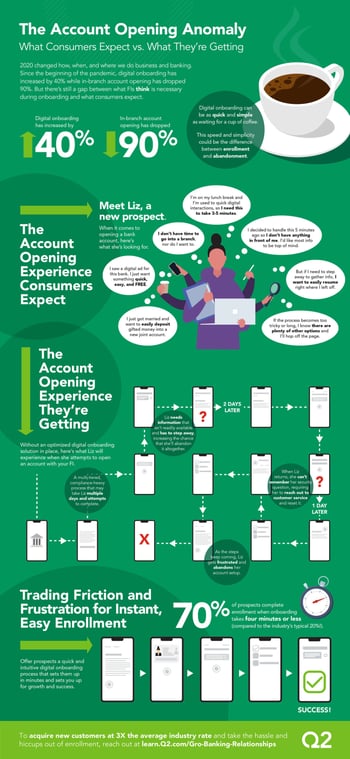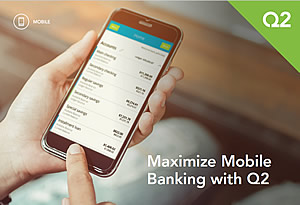Our international leasing team recently responded to a survey assessing the state of the leasing market. Their responses should be informative for those companies trying to better understand digital leasing and looking for guidance as they transition from older technologies to modern innovative solutions. For this blog, Tim Caldwell, based in Tampa, Florida, shares his thoughts. Tim is a Senior Business Analyst for Cloud Lending Professional Services.
Tim’s insights
If you had one piece of advice for companies looking to evaluate new leasing technology, what would it be?
I’d say they need to focus on flexibility, accessibility, and partnership.
How flexible is the solution? Changes may be needed due to growth, business process changes, etc. When a company grows, it must consider whether its solution is flexible enough to handle changes without extensive development. Many systems are rigid and require a developer for even simple changes such as moving a field in a layout or adding fields. Ask yourself: To what extent am I able to redesign the system without a developer?
When it comes to accessibility, two questions need to be answered. One, is the system accessible remotely or on-premise only? And the second relates to the data within the system. How accessible or easy is it to report with the data in the system?
Companies also must think through their vendor relationship – i.e., the partnership versus customer approach. Is the software vendor interested in being a partner with you and developing solutions alongside you as you grow the business? Or, conversely, are they only concerned with selling you an out-of-the-box product? And when product gaps are identified, what is the vendor’s process for addressing them?
If a software vendor is a true partner, they’ll listen to you in identifying product gaps for inclusion in the product. However, if you’re only considered a ‘customer', you probably can expect extensive in-house development expenses to build out the identified product gaps.
What are the questions every lessor should ask their vendor when evaluating technology?
Four questions should be top of mind:
- How flexible is the platform?
- Will we be considered only ‘customers’ or true partners in growing our business and the technology into the future?
- How much R&D is the vendor continually devoting to their offerings?
- Will I have any input into the future roadmap of the technology?
Automation is bringing a lot of changes to Small Ticket Finance and the Credit/Underwriting aspect of it. How has automation played a role in your experience?
It’s played a role in the entire business flow automation, putting the sale in the dealer’s hands from start to finish. In one very interesting use case, the solution Cloud Lending is building allows a client to enter the deal, get an approval or decline, and then automatically be funded for the deal. For many of these transactions, they can receive an approval within a few minutes. The dealer is then funded the same day for the equipment.
In another use case, the client has a program executing low-dollar ticket-size transactions. Typically, these transactions wouldn’t be economical; however, with automation they’ll be able to really quicken approvals and cut out overhead to make these transactions financially viable.
From your prospective, what are the top features that Cloud Lending offers that perhaps customers didn’t realize until you showed them?
There are four that customers are always pleased to learn about.
- Vendor Programs – This is a great offering in CL Originate™. Programs are setup with vendors for specific equipment, fees, terms and conditions, vendor points, rates, etc. – they’re all handled in the product.
- Approval Hierarchy – Companies can set up approval processes for applications based on any criteria within the application such as deal size, yield, legal requirements, etc. Also, customers may require one approver, multiple approvers, or any variety of approvers specific types of approval—and this ability is CL Originate. Salesforce approvals are simple, we have developed a complex approval process.
- Pricing Overrides – This useful feature in CL Originate allows an override of a payment amount or yield. The system will recalculate the other financial calculations automatically, giving a company the flexibility to make these changes on the fly.
- Vendor Points – Customers can calculate vendor points and execute points overrides. This functionality is very flexible, allowing points on points calculations.
There is a notion called FUD Factor – Fear, Uncertainty, and Demand – upon which many buying decisions are based. When talking to prospects about their fear, uncertainty, and demand, why are they talking to Cloud Lending?
When there’s fear, prospects worry about the competition and losing market share. A question crossing their minds is: What might happen if Amazon or another large internet company decides to turn the corner and invest the capital, technology, and design to become a large equipment lessor? The competition isn’t the traditional players I meet at conferences, it’s the unknown players with incredible relationships with vendors and consumers who have massive economies of scale.
One person I talked to compares his digital leasing project to the space race. His company faces the competition in the same way Russia and the U.S. did. It’s the greatest race of their time that is now underway.
When uncertainty is involved, prospects are worried about market changes or their inability to execute to a high level, helping recession-proof their portfolio. Standard industry, I believe, is expecting a cyclical recession within the next two to three years, and companies worry whether they are in position to weather that storm as it approaches. If companies are using automation and a digital platform, they will be able to adapt in near-real time. If not, all bets are off.
If demand drives decision making, it’s because the company has outgrown their system and/or they’re going into a new industry or vertical and cannot scale. I haven’t seen this with Cloud Lending’s solution. Doing away with legacy systems and looking for flexibility in growth, companies increasingly seek a partner to help them enter new markets and work with them on technological advances needed to compete in these markets.
When talking with customers and prospects, how do build trust and develop a partnership?
It’s always said, ‘Honesty is the best policy’. Customers are used to the sales mentality of smoke and mirrors to get the sale. The execution of the sale is where you must be 100% honest and clarify what the product can do, what the roadmap is, where we can work together on the roadmap, and what can be done about the gaps. All of this must be done with integrity and honesty.
If honest, you’ll build the trust that can endure almost any issue that comes. Once the honesty is broken in the relationship, the customer has no anchor holding them strong.
If you have comments for Tim, touch base with him. We also invite you to learn more about Cloud Lending.
In the next blog post of the What’s Happening in Leasing series, Ross Hook, regional sales manager for Australia and New Zealand, provides insights on his market.
Recommended Resources
Asset Finance: Top Tips for Succeeding in the New Digital Landscape
In this report, learn the key actions that you and your organisation can take to ensure a positive outcome and optimise return on investment from your digital transformation initiatives.
Essential Ingredients of a Modern Leasing Platform: Built Natively On Salesforce
Bring your company into the fintech age with seamless, flexible, cloud-based leasing technology.
Agile Leasing Solutions for Modern Businesses
Among the topics in this paper, learn more about online applications that automate underwriting, decisioning, and servicing functions to make it easier for customers to initiate new leases and manage their accounts.





